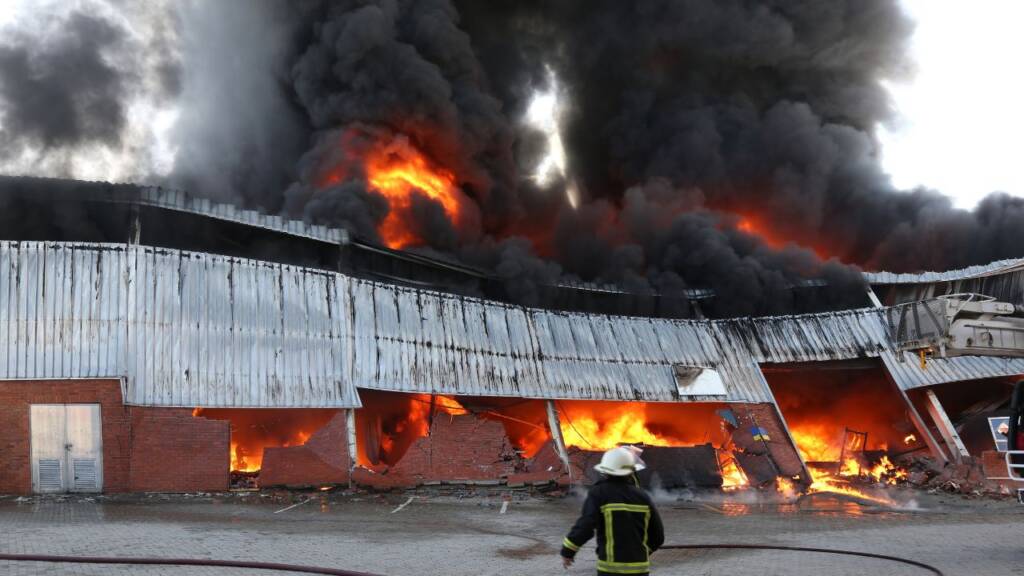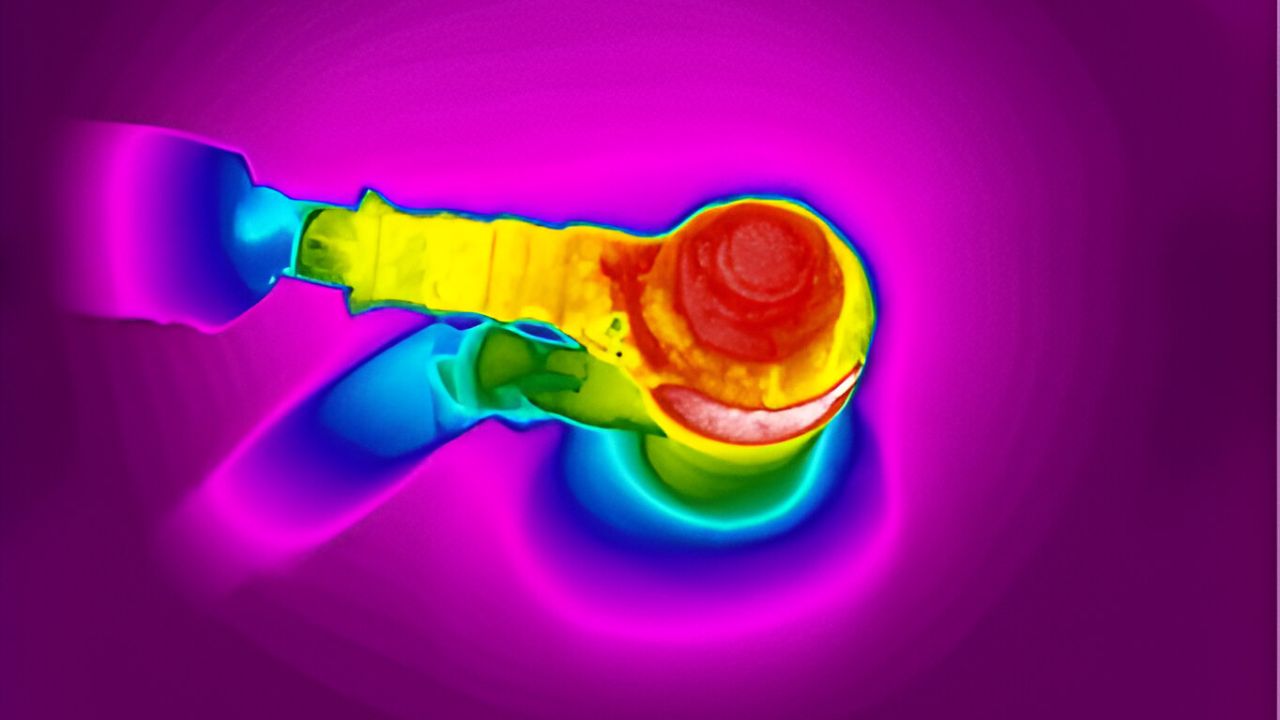How to Prevent the Risk of Fire When Storing Lithium-Ion Batteries in a Warehouse?
Thanks to their ability to convert chemical energy into electric energy, lithium-ion batteries represent a major step forward for modern society, and now a multitude of electronic devices. However, this technology, which emerged in the 90s, is not without its risks. According to the INRS, lithium batteries are responsible for a 25% increase in fires at waste sorting sites.
Due to their highly flammable nature, batteries and their storage represent a new challenge. So, it’s essential to ask the following question: what are the risks associated with storing batteries, and what solutions can be considered to prevent lithium battery fires?
What are the risks associated with storing lithium-ion batteries?
Self-combustible objects
In 2022, lithium-ion batteries were responsible for more than 200 fires in New York city alone, killing six people and injuring nearly 150. These objects, which require special precautions, are renowned for their ability to ignite spontaneously, even in the absence of an external heat source. This is because the chemicals in batteries have a relatively low ignition point. They also have the ability to self-ignite through a process known as “thermal runaway”.
Therefore, the recommended temperature for battery storage around 15°C. Under no circumstances should the temperature exceed 70°C; above this threshold, the electrodes responsible for converting chemical energy into electrical energy become unstable, which can lead to the release of flammable gas. When these gases mix with the air, they cause the room temperature to rise. This can lead to flames appearing on the battery, causing other components and the outer casing to melt. If the temperature exceeds 130°C, an exothermic reaction can occur, triggering an almost uncontrollable thermal runaway, with temperatures reaching 600°C.
What are the main causes of battery-related fires.
At first glance, a lithium-ion battery presents no particular danger as long as it is handles in accordance with the standards recommended by the manufacturers and stored in good conditions. As a result, battery-related fires are always the result of human error, whether due to careless storage conditions or mishandling.
As lithium is a highly reactive metal, batteries become unstable when damaged or overcharged. There are three types of situations that can lead to thermal runaway of the battery:
- Electrical overload: an overload or total discharge can cause a short-circuit and start a fire.
- Mechanical damage: if the battery is damaged by impact or compression, this can lead to cell deformation and a short-circuit.
- Thermal overload: when batteries are exposed to an external heat source (e.g., storage in direct sunlight without temperature control), this can lead to fire.
It is therefore essential to handle and store batteries with care, to prevent the risk over overcharging, overheating, or even explosion.
What are the consequences of a lithium battery fire?
Fires that are particularly difficult to fight
Fires involving lithium batteries are still greatly feared by manufacturers as they can be extremely violent and particularly difficult to control. When a fire breaks out, it represents an immediate danger to people in the vicinity because of the release of irritating gases that are harmful to the body. A burning battery also poses a serious threat to the environment, dispersing chemicals into the air, water, and soil.
For firefighting professionals, controlling these fires therefore requires increased vigilance and the implementation of special precautions. It requires the use of very large quantities of water, and even additional chemical substances to extinguish the flames. However, putting out the fire is not the end of the operation: post-fire management must be undertaken. The batteries, which are still hot, continue to represent a risk of thermal runaway, which is likely to trigger a new fire. This risk is eliminated when the batteries have been sufficiently cooled and monitored for several hours after the incident.
In addition to the dangers posed by the fire itself, this type of incident can have serious repercussions for the company (production site) or the local authority (storage site). This can result in considerable financial losses due to material damage to installations, equipment, and stock. Losses due to production delays following the fire are often fatal for the company: French statistics show that 70% of companies that are victims of a major fire disappear in the months that follow.

An ever-increasing number of incidents reported
With the rise in popularity of everyday items powered by lithium-ion batteries, such as household appliances and light mobile vehicles (electric bikes, scooters, kick scooters, etc.), the number of fires linked to this technology is on the increase. In another article on battery fires, an NBC News article quotes the New York City Fire Department as saying that the 200 incidents in 2022 is double the amount in 2021. CNN also reports that Lithium-ion battery fires are happening more often.
Among the industrial sectors most affected, recycling professionals top the list. Storage sites for new batteries are also regularly in the headlines. Two serious fires have occurred in warehouses since the beginning of 2023 in France, one near Rouen in January 2023 and the other in Loire-Atlantique at the end of February.
Using the Internet of Things and thermography to prevent lithium battery fires
In the light of the resurgence of these events, it seems essential to turn to technologies that enable continuous monitoring of sites where batteries are stored in order to detect any outbreaks of fire as early as possible. UTC (FIRE Batteries) detectors are an effective way of preventing fires caused by lithium batteries and damage to businesses exposed to this risk.
Thanks to its ability to quickly detect temperature variations, the UTC is a real innovation for spotting the early stages of thermal runaway that are typical of lithium batteries. Connected to the Internet 24 hours a day, 365 days a year, this product developed by UTC-System, a subsidiary of Wintech Groupe, can trigger an instant alert as soon as an abnormal rise in temperature is detected. This is a major breakthrough in fire prevention, enabling rapid, targeted action to prevent fires from starting.
By combining early detection of thermal variations with continuous monitoring, the UTC represents a promising opportunity to prevent lithium battery fires.
Thanks to their ability to convert chemical energy into electric energy, lithium-ion batteries represent a major step forward for modern society, and now a multitude of electronic devices. However, this technology, which emerged in the 90s, is not without its risks. According to the INRS, lithium batteries are responsible for a 25% increase in fires at waste sorting sites.
Due to their highly flammable nature, batteries and their storage represent a new challenge. So, it’s essential to ask the following question: what are the risks associated with storing batteries, and what solutions can be considered to prevent lithium battery fires?
What are the risks associated with storing lithium-ion batteries?
Self-combustible objects
In 2022, lithium-ion batteries were responsible for more than 200 fires in New York city alone, killing six people and injuring nearly 150. These objects, which require special precautions, are renowned for their ability to ignite spontaneously, even in the absence of an external heat source. This is because the chemicals in batteries have a relatively low ignition point. They also have the ability to self-ignite through a process known as “thermal runaway”.
Therefore, the recommended temperature for battery storage around 15°C. Under no circumstances should the temperature exceed 70°C; above this threshold, the electrodes responsible for converting chemical energy into electrical energy become unstable, which can lead to the release of flammable gas. When these gases mix with the air, they cause the room temperature to rise. This can lead to flames appearing on the battery, causing other components and the outer casing to melt. If the temperature exceeds 130°C, an exothermic reaction can occur, triggering an almost uncontrollable thermal runaway, with temperatures reaching 600°C.
What are the main causes of battery-related fires.
At first glance, a lithium-ion battery presents no particular danger as long as it is handles in accordance with the standards recommended by the manufacturers and stored in good conditions. As a result, battery-related fires are always the result of human error, whether due to careless storage conditions or mishandling.
As lithium is a highly reactive metal, batteries become unstable when damaged or overcharged. There are three types of situations that can lead to thermal runaway of the battery:
- Electrical overload: an overload or total discharge can cause a short-circuit and start a fire.
- Mechanical damage: if the battery is damaged by impact or compression, this can lead to cell deformation and a short-circuit.
- Thermal overload: when batteries are exposed to an external heat source (e.g., storage in direct sunlight without temperature control), this can lead to fire.
It is therefore essential to handle and store batteries with care, to prevent the risk over overcharging, overheating, or even explosion.
What are the consequences of a lithium battery fire?
Fires that are particularly difficult to fight
Fires involving lithium batteries are still greatly feared by manufacturers as they can be extremely violent and particularly difficult to control. When a fire breaks out, it represents an immediate danger to people in the vicinity because of the release of irritating gases that are harmful to the body. A burning battery also poses a serious threat to the environment, dispersing chemicals into the air, water, and soil.
For firefighting professionals, controlling these fires therefore requires increased vigilance and the implementation of special precautions. It requires the use of very large quantities of water, and even additional chemical substances to extinguish the flames. However, putting out the fire is not the end of the operation: post-fire management must be undertaken. The batteries, which are still hot, continue to represent a risk of thermal runaway, which is likely to trigger a new fire. This risk is eliminated when the batteries have been sufficiently cooled and monitored for several hours after the incident.
In addition to the dangers posed by the fire itself, this type of incident can have serious repercussions for the company (production site) or the local authority (storage site). This can result in considerable financial losses due to material damage to installations, equipment, and stock. Losses due to production delays following the fire are often fatal for the company: French statistics show that 70% of companies that are victims of a major fire disappear in the months that follow.

An ever-increasing number of incidents reported
With the rise in popularity of everyday items powered by lithium-ion batteries, such as household appliances and light mobile vehicles (electric bikes, scooters, kick scooters, etc.), the number of fires linked to this technology is on the increase. In another article on battery fires, an NBC News article quotes the New York City Fire Department as saying that the 200 incidents in 2022 is double the amount in 2021. CNN also reports that Lithium-ion battery fires are happening more often.
Among the industrial sectors most affected, recycling professionals top the list. Storage sites for new batteries are also regularly in the headlines. Two serious fires have occurred in warehouses since the beginning of 2023 in France, one near Rouen in January 2023 and the other in Loire-Atlantique at the end of February.
Using the Internet of Things and thermography to prevent lithium battery fires
In the light of the resurgence of these events, it seems essential to turn to technologies that enable continuous monitoring of sites where batteries are stored in order to detect any outbreaks of fire as early as possible. UTC (FIRE Batteries) detectors are an effective way of preventing fires caused by lithium batteries and damage to businesses exposed to this risk.
Thanks to its ability to quickly detect temperature variations, the UTC is a real innovation for spotting the early stages of thermal runaway that are typical of lithium batteries. Connected to the Internet 24 hours a day, 365 days a year, this product developed by UTC-System, a subsidiary of Wintech Groupe, can trigger an instant alert as soon as an abnormal rise in temperature is detected. This is a major breakthrough in fire prevention, enabling rapid, targeted action to prevent fires from starting.
By combining early detection of thermal variations with continuous monitoring, the UTC represents a promising opportunity to prevent lithium battery fires.




















